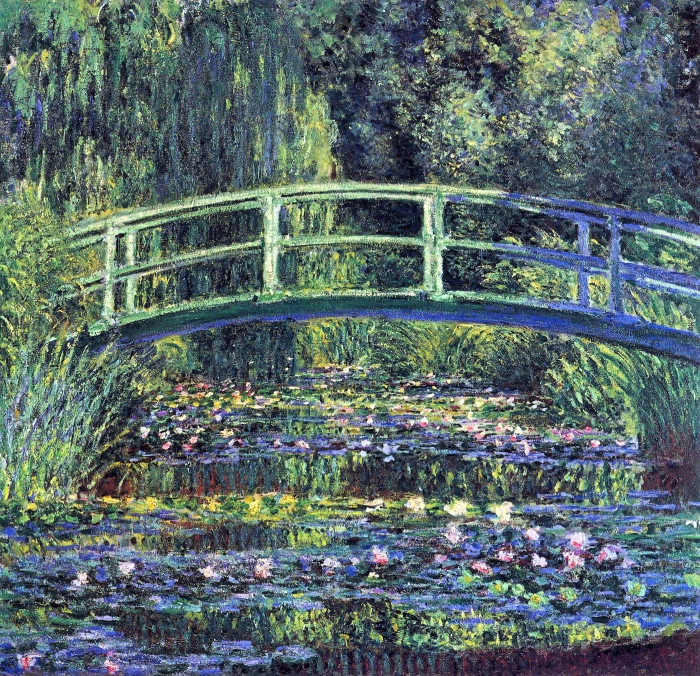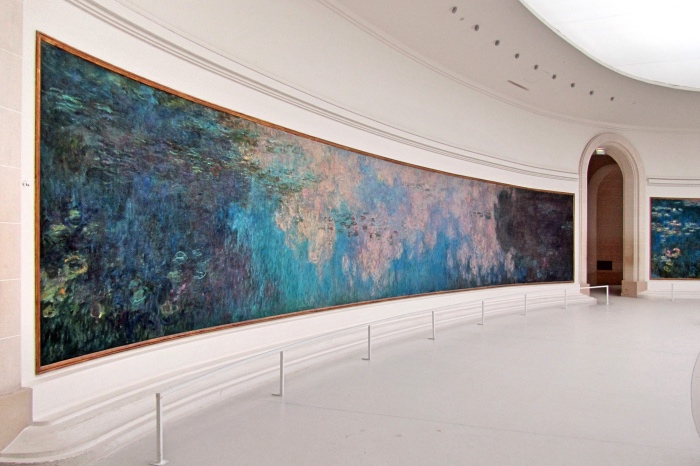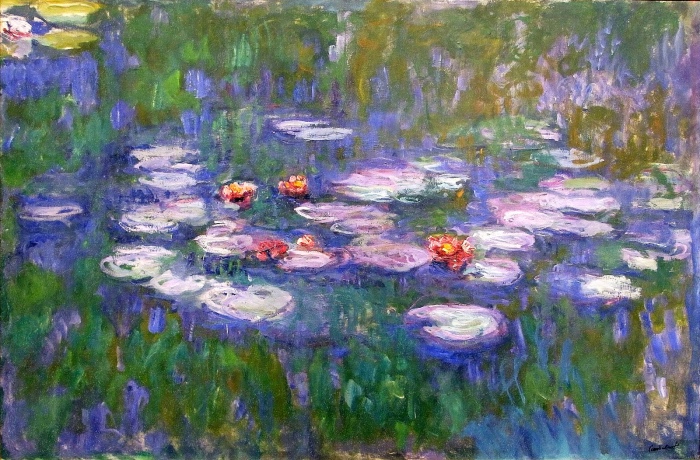
MONET’S WATER LILIES: 5 THINGS TO KNOW
To Monet painting the Water Lilies meant painting no longer like an Impressionist artist, but experimenting something completely new.
The Water Lilies are a series of paintings painted between 1897 and 1926 by Claude Monet, who is considered the father of Impressionism, but also the artist who was able to go beyond Impressionism bringing his style towards Abstract painting, and becoming a forerunner.
If you want to know what Abstract painting is, you can read the post I wrote containing a list of abstract painters and their major works.
Here are 5 things to know in order to know everything about Monet and his Water Lilies.

Il ponte giapponese del giardino di Giverny.
1. MONET’S HOUSE IN GIVERNY
In 1883 Monet moved to Giverny, few kilometers from Paris, and in 1890 he bought the house which would become his refuge until his death. There he began creating a garden with an artificial pond, where to grow Water lilies.
READ ALSO: The Impressionists, the debut.
2. MONET’S GARDEN
To create his garden Monet drew inspiration from Japanese culture and gardens characterized by small bridges, exotic plants and any kind of flowers.
Over the years the garden became the center of Monet’s life, who built a sluice gate to control the water flow and temperature, as well.
Everything was planned to be a work of art and there Monet lived in symbiosis with his art, in a protected world characterized by harmony.
READ ALSO: The Barbizon School.
3. MONET’S SERIES OF PAINTINGS
In the last few years Monet’s artistic production is characterized by works in series.
Between 1890 and 1891 he finished the “Haystacks” series, consisting of more than 25 paintings, and then in 1891 the “Poplars” series, consisting of around 20 paintings. Since 1892 he worked on the Rouen Cathedral series consisting of over 30 paintings, and eventually he would dedicate himself totally to the Water Lilies.

Le Ninfee del Musee de l’Orangerie a Parigi.
4. THE WATER LILIES
At the end of his artistic career Water Lilies became Monet’s favourite subject .
The same subject is depicted from slightly different angles, at different hours of the day, in different seasons and always in different lights.
Water and sky blend with nature and the forms dissolve like they melt into the colour in which the landscape completely disappears.
Monet decided to give France part of the Water Lilies series, on exhibition still today at the Musée de l’Orangerie of Paris.
The artist wanted people would lose themselves in a natural landscape, and also for this reason the light is completely natural.
READ ALSO: 5 things to know about Claude Monet.
5. VISITING GIVERNY AND MONET’S GARDEN WITH HIS WATER LILIES
Monet died in 1926, but his house and his garden with the Water Liles are still there like a living proof of Monet’s inspirations.
His house and the garden are open every day from March to October, and from Paris you can get there by train (train from Paris Saint-Lazare train station- shuttle Veron-Giverny). If you have a look at the official website you’ll certainly feel like visiting this place immediately, because you feel like you’re losing yourself in one painting by Monet. ( https://fondation-monet.com)
READ ALSO: Post-Impressionism.

Monet, Ninfee (1916 – 1919).


che bel disegno
😀
ciao
Meravigliosi i dipinti di Monet come quelli di tutti impressionisti. D’ altra parte è proprio la loro novità di dipingere all’aperto che ha permesso loro di dare un svolta all’ arte per poter catturare la natura con le tipiche pennellate che li caratterizzano. Per questo è altrettanto bello che Monet abbia potuto non solo trasferire la realtà su una tela ma anche realizzare una tela nella realtà con la costruzione del piccolo ponticello, il laghetto ed un posto dove dipingere serenamente. Come spesso accade però gli artisti non sono mai abbastanza contenti di quello che realizzano. Sarebbe bello poter andare a visitare il posto dove ha vissuto, peccato sia un po’ lontano da qui! Grazie per l’ articolo.
La casa di Monet è un luogo spettacolare. Se possibile è meglio andarci d’estate per vedere la luce che si riflette sul suo laghetto e le sue ninfee.